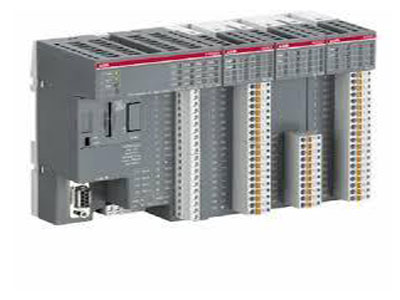What Is Encoder In PLC?
Key Takeaway
An encoder in PLC is a sensing device that provides feedback. It converts motion into an electrical signal. This signal can be read by the PLC, which uses it for precise control and monitoring of machinery. Encoders are crucial in applications requiring accurate position, speed, and direction information. They are commonly used in motion control systems to ensure precise movements in automation processes. Encoders enhance the accuracy and efficiency of industrial operations by providing real-time data to the PLC.
Definition and Types of Encoders
Encoders are instrumental devices in automation that convert motion into an electrical signal, which can be read by a PLC to determine position, speed, or direction. Two primary types of encoders are used in industrial settings: incremental and absolute. Incremental encoders provide output signals each time the encoder shaft rotates a certain amount, making them suitable for measuring speed and relative position. Absolute encoders, on the other hand, generate a unique code for each position, ensuring precise location tracking even after a power loss.

How Encoders Work in PLC Systems
Encoders serve as vital components in PLC systems, enabling precise monitoring and control of mechanical motion. Their functioning revolves around generating pulses that correlate with the movement of an object. These pulses act as feedback signals, conveying valuable information to the PLC regarding the position, speed, and direction of the object being monitored. For example, optical encoders employ light beams directed onto a rotating disk embellished with intricate patterns. As the disk rotates, the variations in light intensity caused by the pattern changes are translated into electrical signals. These signals are then processed by the PLC, allowing it to deduce crucial parameters such as the rotational position or velocity of the monitored device. By comprehending the intricate workings of encoders within PLC systems, engineers can harness their capabilities to optimize automation processes, enhance precision, and ensure seamless operation across diverse industrial applications.
You May Like to Read
Setting Up Encoders with PLCs
Setting up encoders with PLCs requires a systematic approach to ensure seamless integration and accurate interpretation of encoder signals. Initially, engineers need to carefully select the appropriate type of encoder based on the specific application requirements, considering factors such as resolution, accuracy, and environmental conditions. Once the encoder is chosen, it needs to be physically connected to the PLC system through suitable input/output modules. This involves wiring the encoder’s output signals to the designated input terminals of the PLC.
Following the physical connection, the PLC must be programmed to understand and process the signals generated by the encoders effectively. This includes configuring the input modules to recognize the encoder’s output signals and setting up the necessary logic to interpret these signals correctly. Additionally, engineers may need to calibrate the encoder and adjust parameters within the PLC software to ensure accurate data acquisition and processing. Through meticulous setup procedures, engineers can maximize the functionality of encoders within PLC systems, enabling precise motion control and enhanced automation capabilities across various industrial applications.
Applications of Encoders in Automation
Encoders play a crucial role in various automation applications, contributing to enhanced precision and efficiency in industrial processes. In robotics, encoders serve as vital components by providing real-time feedback on the position and orientation of robotic arms. This feedback enables robots to execute tasks with remarkable accuracy, whether it’s assembling components on a production line or performing intricate maneuvers in complex environments. Similarly, in Computer Numerical Control (CNC) machines used for machining operations, encoders ensure precise positioning of cutting tools, resulting in the production of high-quality components with tight tolerances.
Moreover, encoders are integral to conveyor systems, where they help monitor the speed and position of conveyor belts, ensuring smooth and synchronized material handling operations. Additionally, encoders play a pivotal role in servo motor control applications, where they provide feedback to the control system, enabling precise speed and position control of motors in various industrial machinery. Overall, encoders serve as indispensable components in automation, facilitating enhanced accuracy, reliability, and performance across a wide range of industrial processes and applications.
Troubleshooting Encoder Issues
Troubleshooting encoder issues is a critical aspect of maintaining optimal performance in automated systems. Despite their robustness, encoders can sometimes face challenges such as signal interference, misalignment, or mechanical wear over time. When encountering such issues, it’s essential to conduct a systematic inspection of the encoder system. This includes checking the connections between the encoder and the PLC, ensuring they are secure and free from any damage or corrosion that could disrupt signal transmission.
Furthermore, verifying the alignment of the encoder with the machinery it’s monitoring is crucial, as misalignment can lead to inaccuracies in position feedback. Additionally, reviewing and adjusting the encoder settings within the PLC program can help address any configuration issues that may be causing performance discrepancies.
In more complex scenarios, utilizing diagnostic tools like oscilloscopes or specialized encoder testers can provide valuable insights into the health and functionality of the encoder. These tools enable engineers to analyze signal waveforms, detect anomalies, and pinpoint the root cause of the problem swiftly and accurately. By employing a systematic approach to troubleshooting, engineers can effectively resolve encoder issues and ensure the continued reliability and performance of automated systems.
Conclusion
In conclusion, encoders play a crucial role in PLC systems by providing precise feedback on motion, speed, and position. Their versatility and reliability make them indispensable in various industrial applications, ensuring optimal performance and efficiency in automation processes. Understanding the fundamentals of encoders and their integration with PLCs is essential for engineers to design and maintain robust automation systems.
